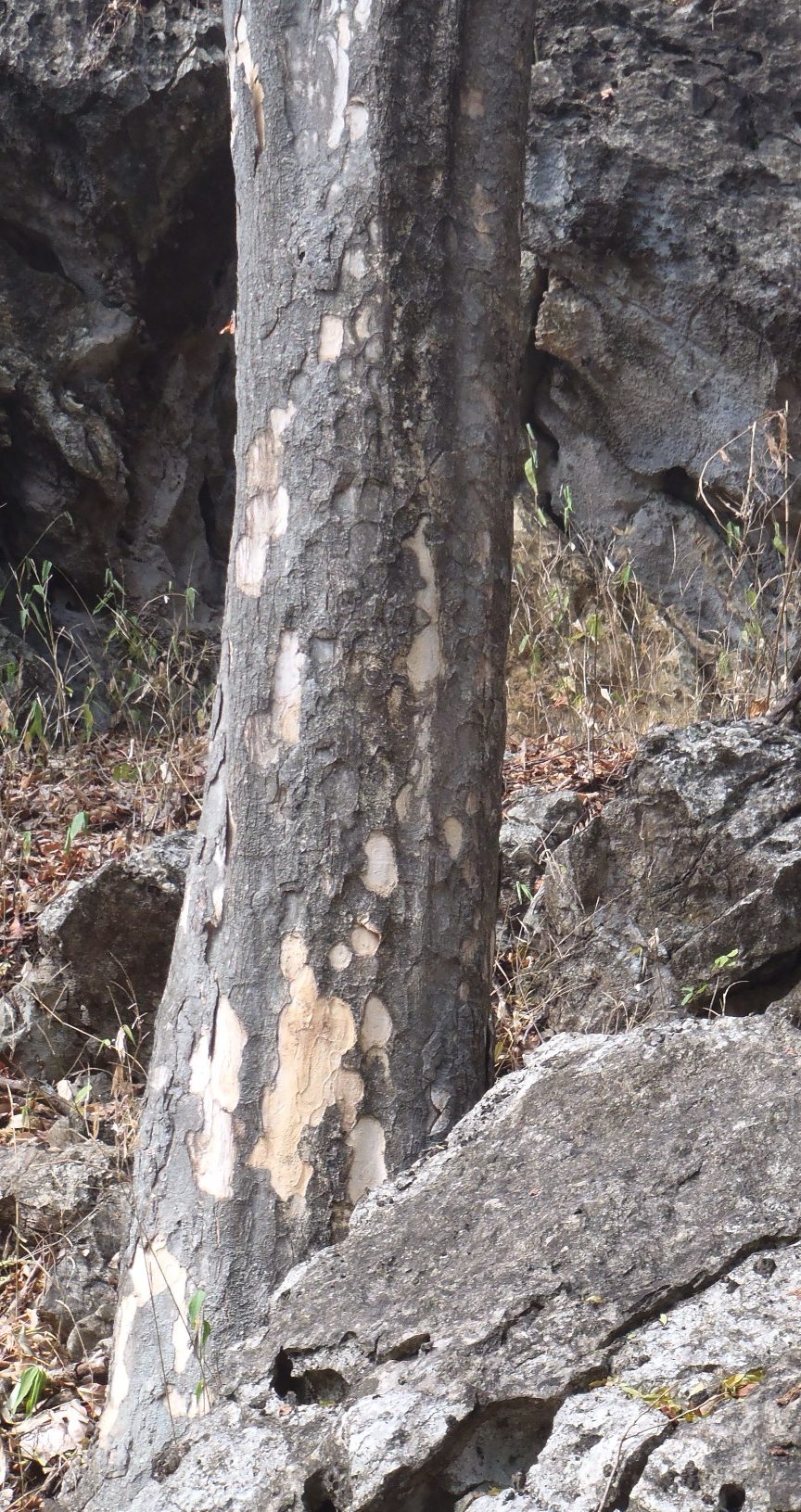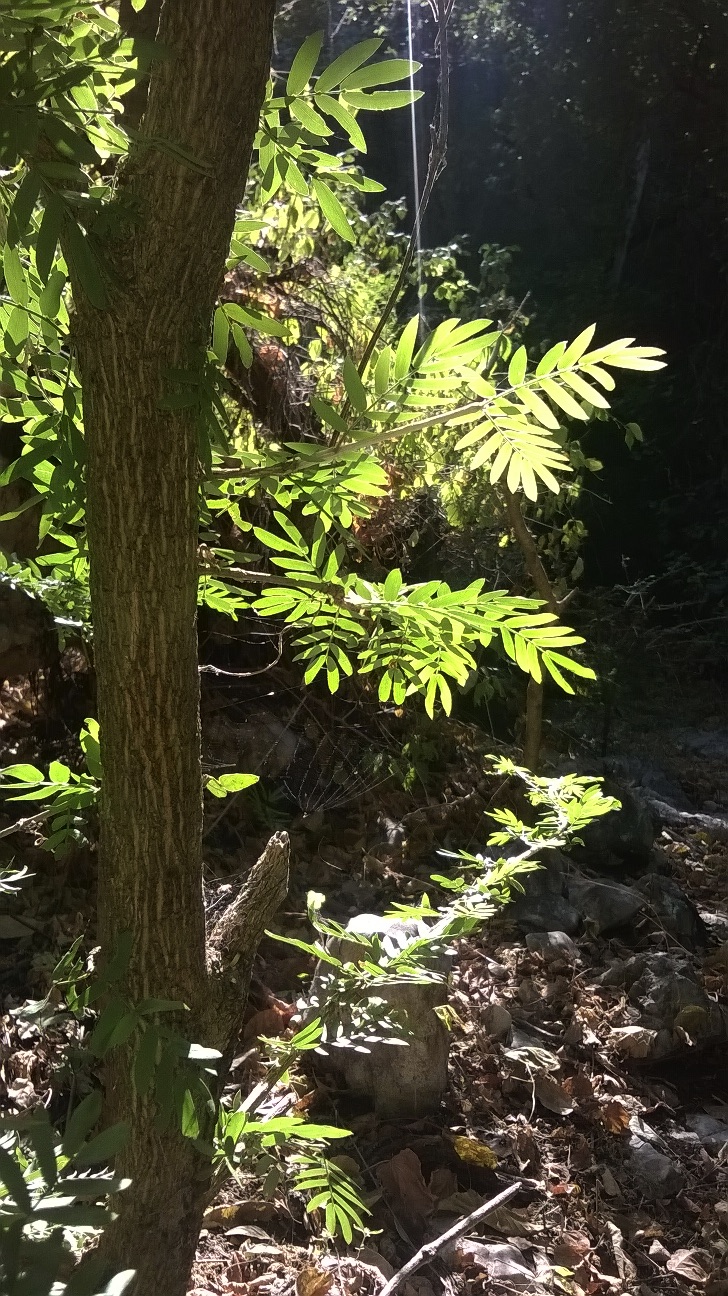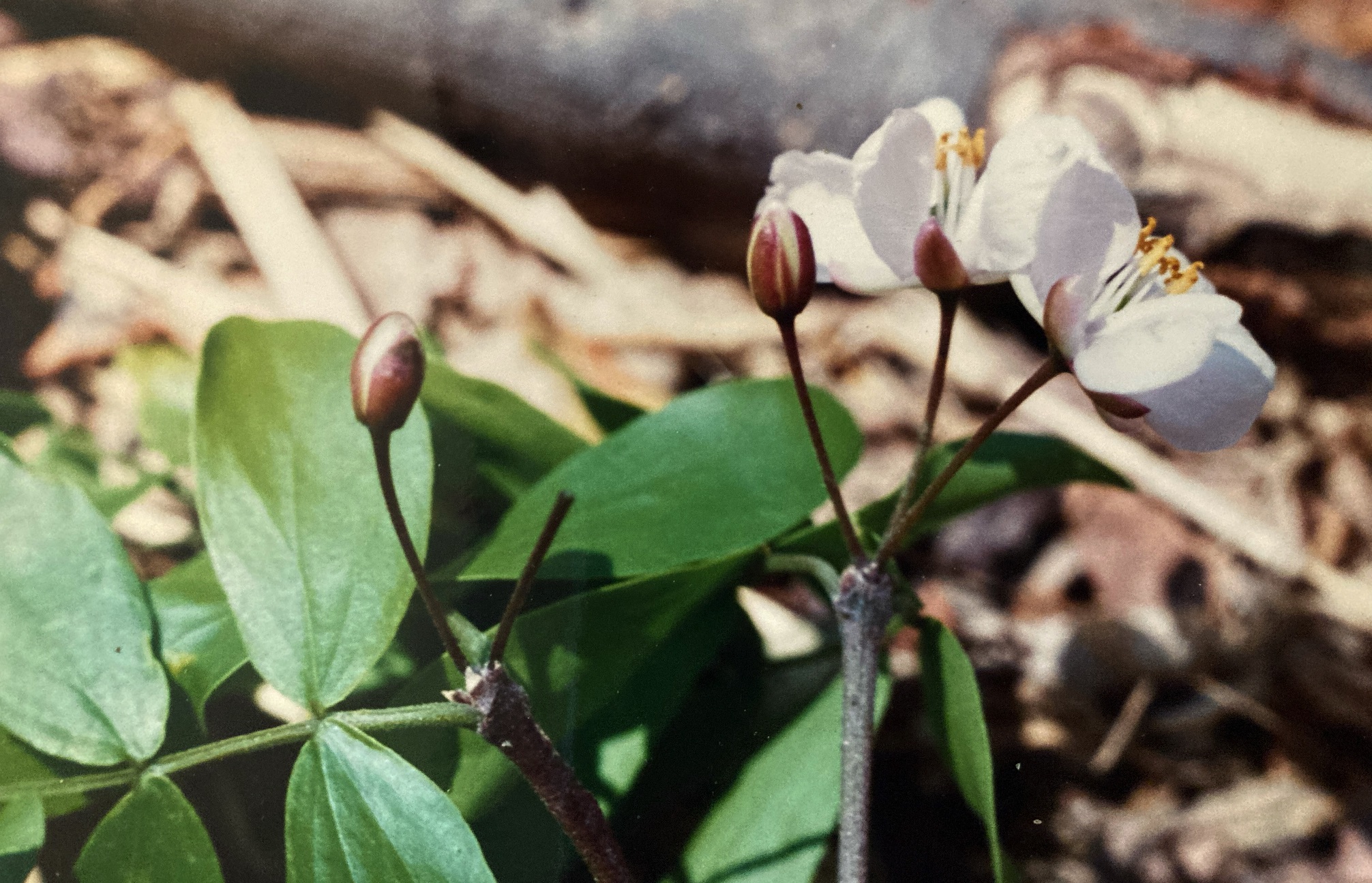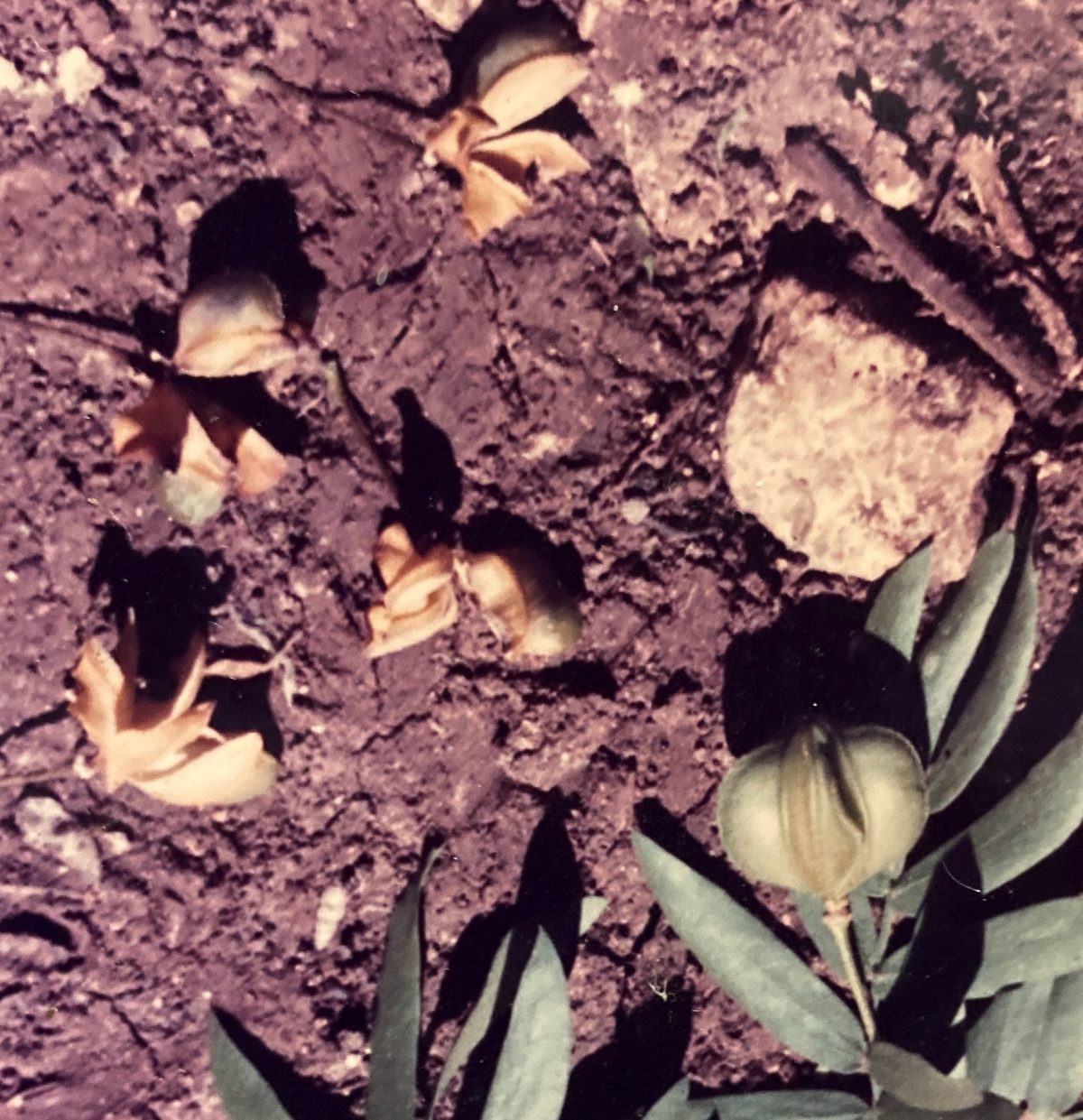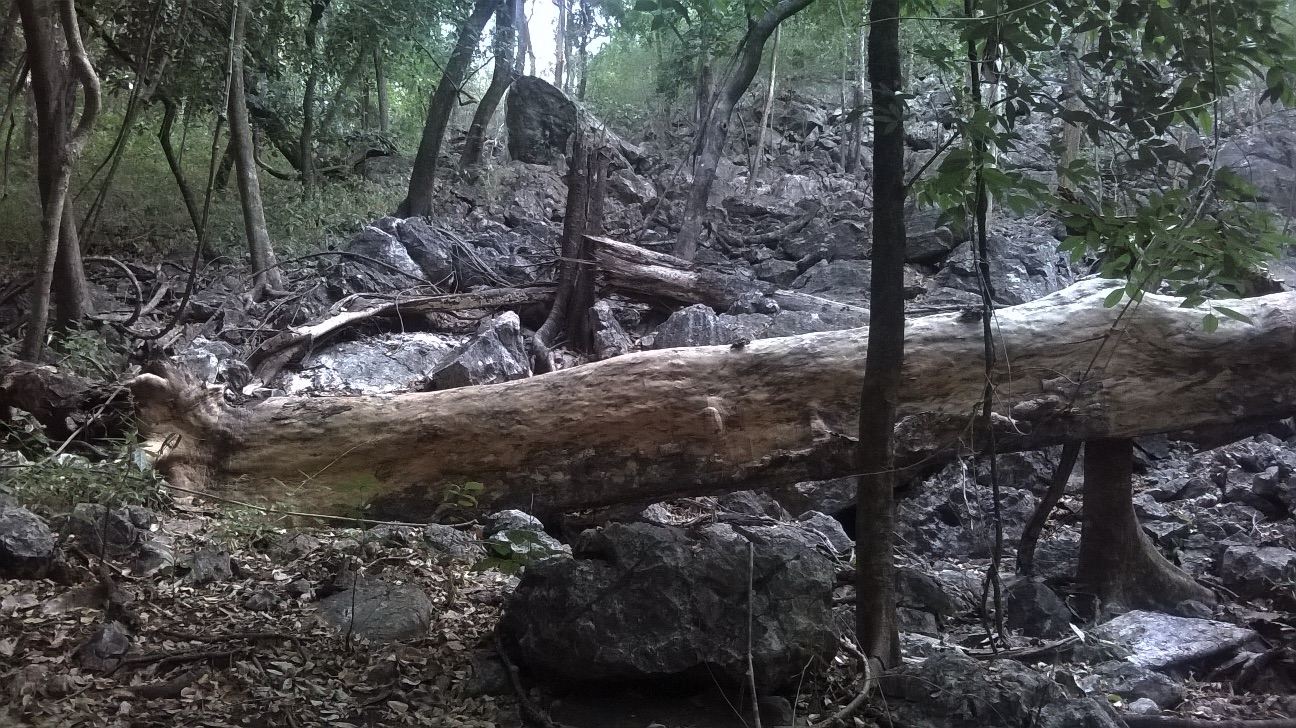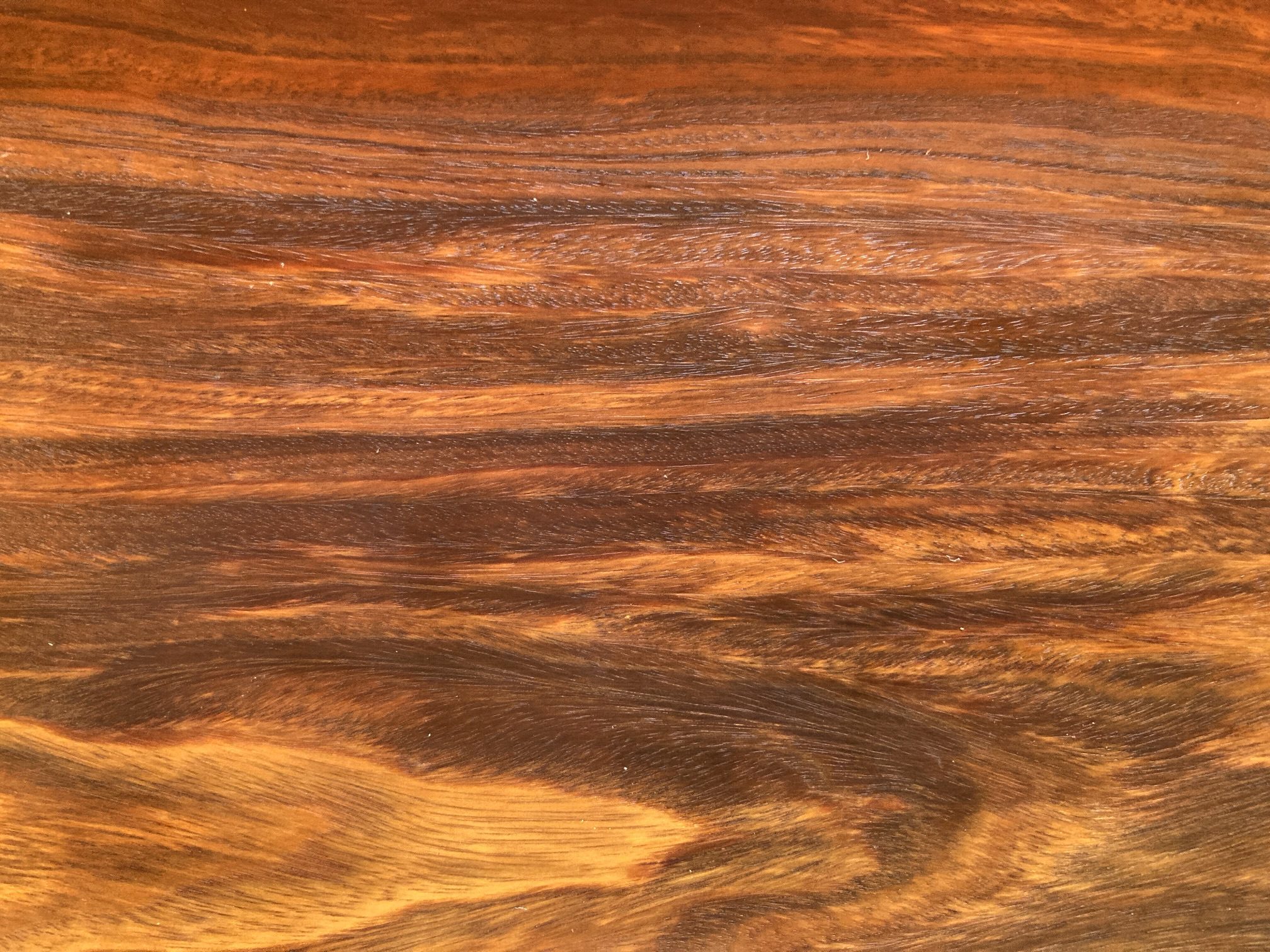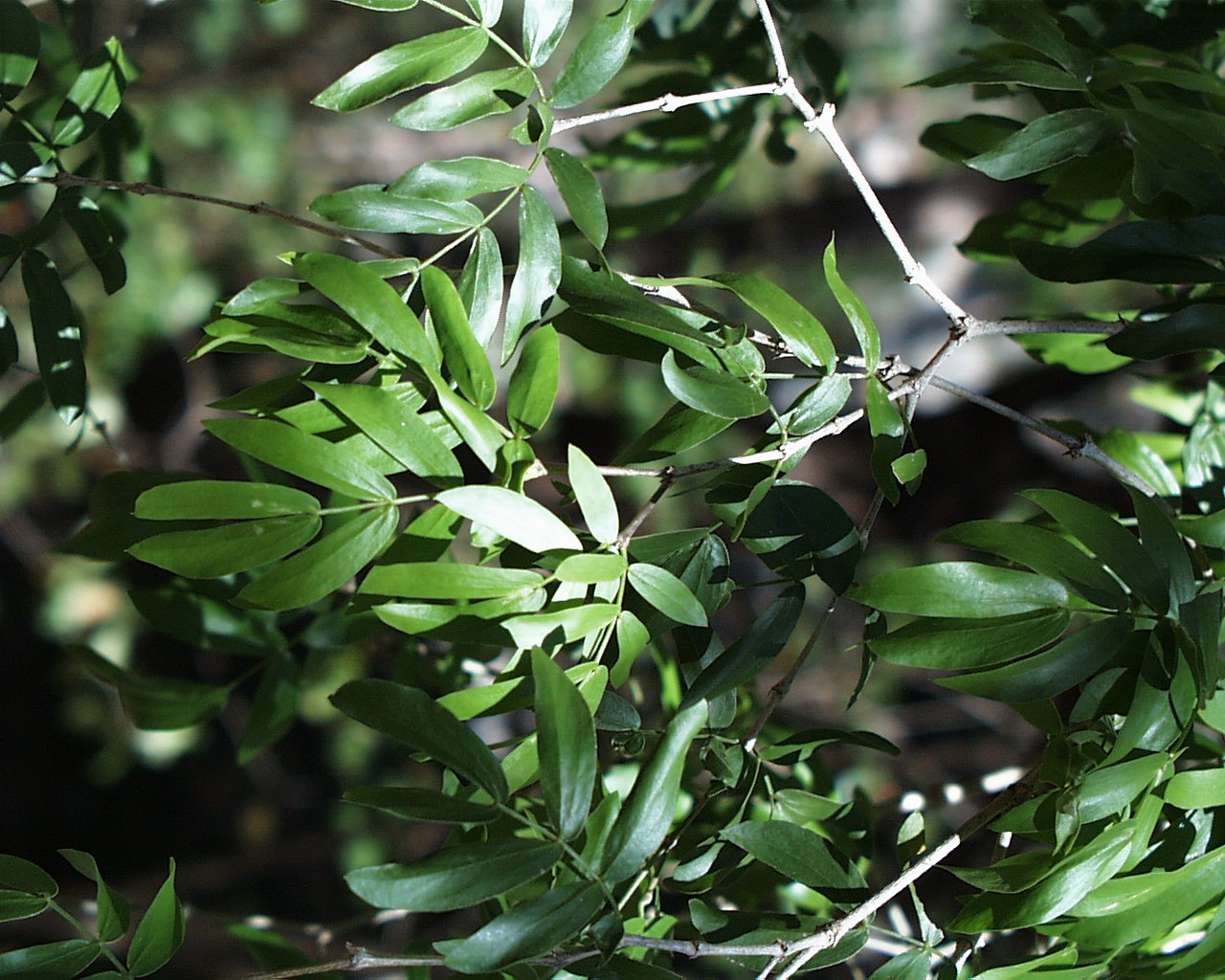Guaiacum sanctum. L.
Zygophyllaceae
Guayacán Real, Lignum Vitae
Rare (or locally occasional) subcanopy or canopy tree (20-25m) whose range is restricted to Costa Rica’s dry, northwestern coast. The tree is most famous for its greenish, dense, very hard wood, that was employed in the past for jobs that today are relegated to various metals. The wood is also prized for its beauty and durability, and it is the substrate for many decorative sculptures and bowls.
Description: Guayacán trees have irregular but mostly straight trunks (50cm). The boles are clad in slate-grey bark that exfoliates in thick, rounded plates. The new bark exposed beneath the shed plates is light tan in color, giving the bole a characteristic and identifying mottled appearance. The open crown is supported by many thin, angular branches.
With their paripinnate and opposite arrangement, Guayacán leaves (12cm x 8cm) possess an uncommon type of compound leaf structure. Each of the ten or so leaflets is narrow, blade-shaped and asymmetrical. The violet-blue or sometimes whitish flowers (2 cm) appear in March and are produced in small, terminal groups. Each is composed of five maroon sepals, and an equal number of rounded petals and yellow stamens.
Fruits (2cm) are lobed green capsules that grow slowly and persist on trees for months before maturing. During this time, aborted immature fruits are continuously shed, and their shriveled yellow remains can be found on the forest floor. Ripe fruits are yellow and each lobe contains a single seed encased in a reddish-orange aril.
Similar Species: Guayacán trees possess so many unique and identifying features, they are unlikely to be confused with other trees found in their habitat. Among these are the tree’s mottled trunk, unusual leaves, and persistent, lobed fruits. Though Ron-Ron (Astronium graveolens) has a trunk whose coloration may superficially resemble that of Guayacán, its bole is rounder and its leaves are alternate and imparipinnate.
Natural History: Anecdotally, Guayacán trees are said to prefer the calcareous soils found around northwestern Costa Rica’s limestone mountains and hills, though I do not know of any formal studies that support this claim.
Guayacán trees are notoriously slow-growing. Trees found in the forest are often relatively small, as a result. Nevertheless, this species is capable of reaching canopy status. One very large tree observed by the author in Palo Verde National Park was some 100cm in diameter and 20+ meters tall. Regrettably, this enormous tree succumbed to strong storm winds and was knocked over around 2017. To this day, the trunk persists, thanks again to the durability of the heavy, rot-resistant wood (see photo).
Uses: Guayacán trees are renown for producing among the hardest and densest of all woods. The wood is also attractive, with the heartwood a rich olive-green or brown color punctuated by periodically-spaced, darker rings. Surrounded by light-colored sapwood, the combination of the two contrasting tones is aesthetically appealing. For this reason, Guayacán wood is extensively used in artisanry, where its strength and hardness allow for the carving of extremely thin-walled artifacts (especially bowls). According to Poveda (1975), the hardness, durability and natural oils possessed by Guayacán wood made it the material of choice in the past for the supports that held boat propeller axles.
Distribution: In Costa Rica, Guayacán is found in the dry tropical forests of the Guanacaste region, where it is protected by parks like Santa Rosa and Palo Verde. The tree seems to be especially prevalent on the rocky slopes of the limestone hills that are characteristic of this zone. Guayacán ranges from Mexico through Central America, and is present in the Antilles.
Tree Trunk Trunk2 Trunk3 Trunk3 Bark Leaf Leaf2 Leaf&Flower Leaf&Fruit Flower Flower2 Fruit Sapling Wood

